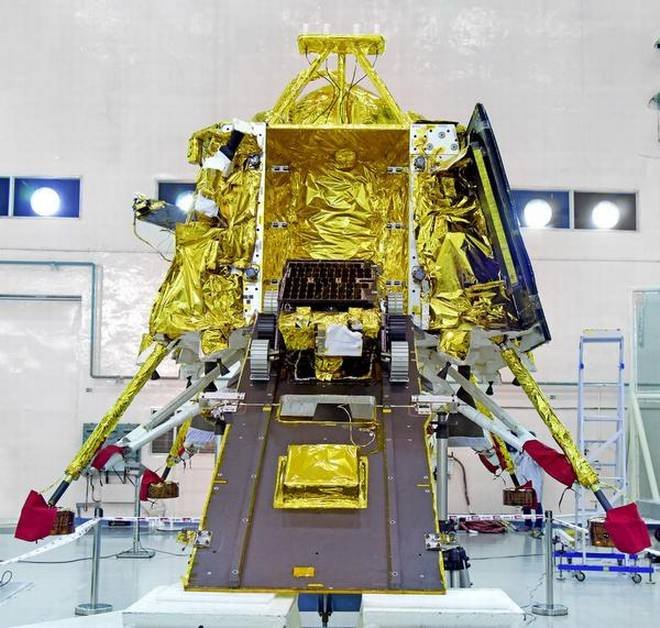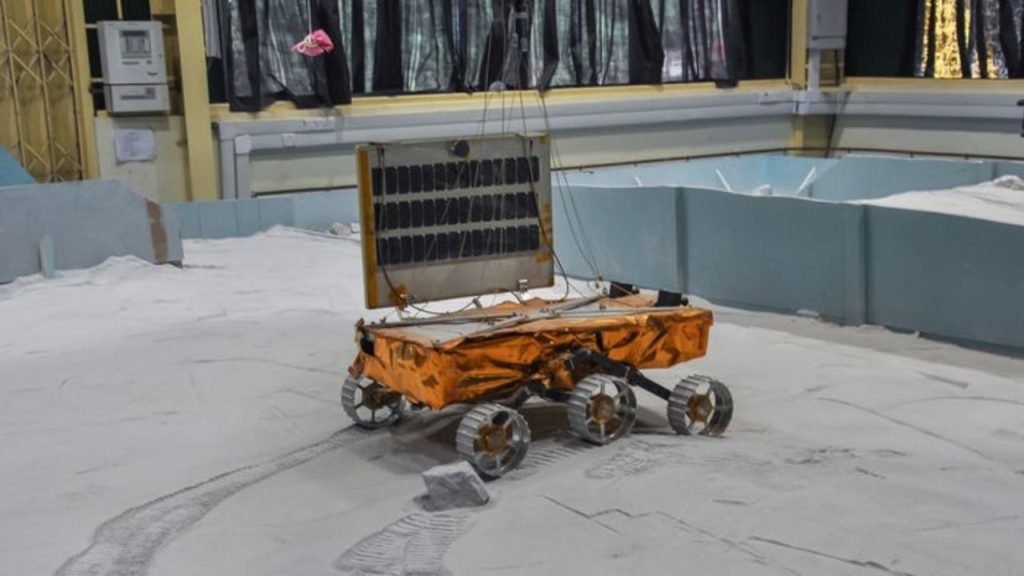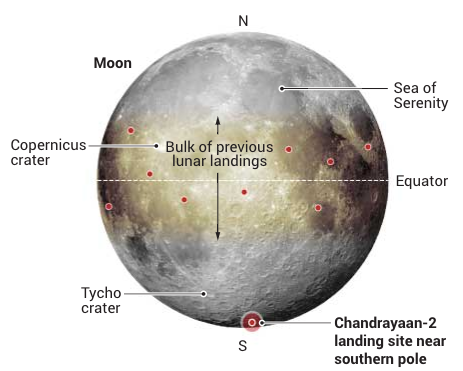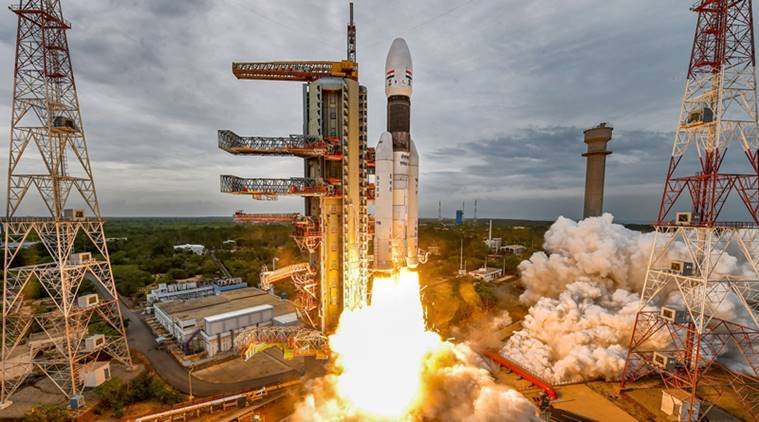ISRO’s first moon lander Vikram and rover Pragyan launched today after postponed on 15th July. On 15th July ISRO canceled the Chandrayaan-2 launch due to a leak in the cryogenic stage of GSLV-MK-3. GSLV MK-3 is the heaviest rocket ISRO has. India is now one step closer to the elite countries who landed on the Moon.
Chandrayaan-2 with Orbiter, Lander and Rover
It will take 48 days for Vikram lander to land on the lunar surface, which is on 7-Sept 2019. It will land between 2 craters Manzinus C and Simpelius N, on the south pole of the Moon. ISRO claims that no other country has landed on this part of the moon.

First, it will take two round trips of the earth until it gets into the lunar orbit. From there, the orbiter will push off the lander near the south pole. After the
The cost of the Chandrayaan-2 is double than the Chandrayaan-1. It cost Rs 978 Crore to launch Chandrayaan-2 compared to Rs 400 Crore for the Chandrayaan-1. ISRO missions are very cost-effective when compared to other space agencies. Chandrayaan-2 has 13 scientific instruments and a payload from NASA.

Image courtesy firstpost
Purpose of this Mission

ISRO’s mission is to test the presence of water on the lunar surface. According to the discovery done by Chandrayaan-1, there could be water existing on the south pole of the Moon. There can be ice formation inside the craters of the moon.
ISRO has selected South pole due to the large part south pole remains in the Shadow. This indicates lower sunlight, which results in ice formation or the
Chandrayaan-2 also aims to study the lunar soil and rocks. This will help us understand the formation of our solar system and the moon. The south pole is not tapped by humans and it has remained in the shadow, it could contain some fossils records of the formation of the moon or solar system.
We still do not know how the moon was formed, or how did all the planets in our solar system c
All countries are now interested in returning to the moon, as we saw china sent its lander Chang’e 4 to the far side of the moon. And Nasa, the European space agency is also looking forward to returning on the moon. This mission by ISRO is watched keenly by the world. A lot of this interest could be to colonize the lunar surface and also be a base for space exploration.
After the successful launch of Chandrayaan-2, ISRO has planned its solar mission Aditya-L1 in the first half of 2020. ISRO is also planning a manned mission Gaganyaan by 2021.
Thanks to ISRO website for information.


